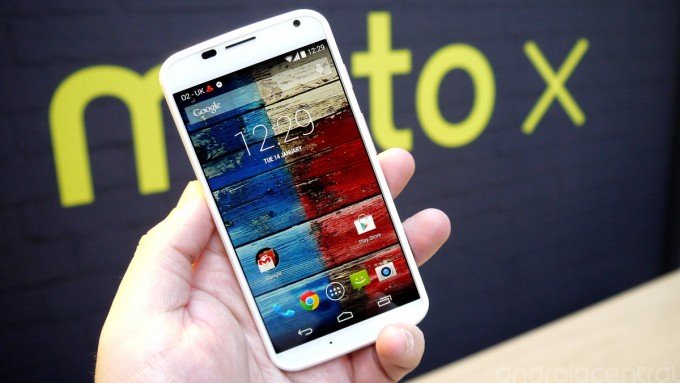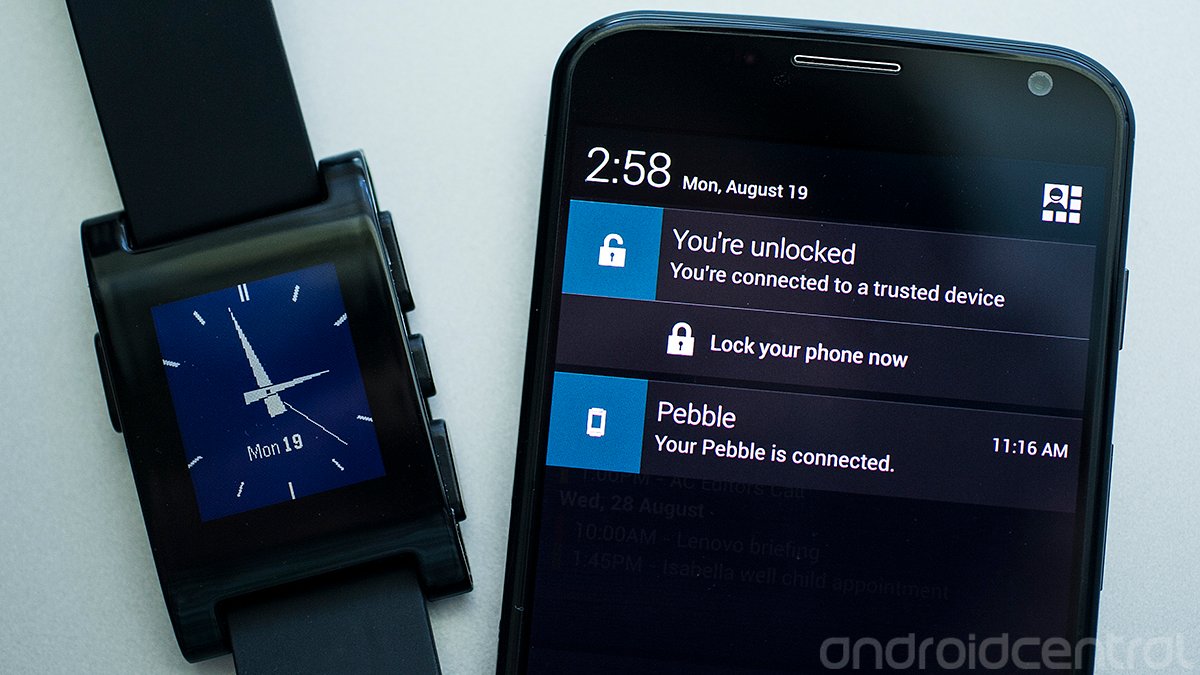
After a late arrival in the UK and mainland Europe, how does the Moto X shape up?
After a five-month wait, European consumers finally got the Moto X this February. A significant launch for Moto’s European arm, it’s occurring as the company prepares to enter yet another period of transition following the Lenovo acquisition.
Industry drama aside, the Moto X the most high-profile Motorola smartphone to hit European shores in at least a couple of years, and undoubtedly the company’s best effort to date. For that reason, the Moto X was our favorite phone of 2013, beating competition from HTC and Samsung. But in contrast to its US launch, the European Moto X is positioned more as a mid-range companion to the Moto G, rather than a competitor to the raft of new high-end Androids appearing in the next month.
In our “casual review” of the European Moto X, we’re not going to re-hash everything we’ve already covered in our full Moto X review and six-month look-back. Instead we’re going to reflect on some general thoughts on the device after three weeks of use, and consider where it belongs in the wider Android marketplace.
So how does the Moto X fit into this new mid-range role, and is it still worth a look so long after its global debut? Let’s take a look…
![]()
Old hardware is new again
As close to a perfectly ergonomic phone as any handset available today.
On the outside, the Moto X is as close to a perfectly ergonomic phone as any handset available today. The back, particularly on the soft-touch woven black model I’ve been using, feels comfortable but classy. The buttons are all in the right places, and the use of minimal bezels has enabled Moto to pack a 4.7-inch display into the same footprint as the 4.3-inch Xperia Z1 Compact. Other phones might look flashier, but nothing comes close to the in-hand feel and ease of use of the Moto X.
At the heart of the Moto X lies Motorola’s “X8” computing system, which is an arrangement of smoke, mirrors and marketing designed to mask the fact that it’s basically a 1.7GHz dual-core Snapdragon S4 Pro doing most of the number-crunching. (That’s backed up by an assortment of low-power components to enable the Moto X’s excellent context-sensitive features, of course.) But Motorola need not be ashamed of the CPU running its phone, as it’s managed to unleash phenomenal performance from this relatively modest chip. Thanks to optimized software, the Moto X feels just as fast to use as any Snapdragon 800 phone, with the exception of the Nexus 5. And with 2GB of RAM and an Adreno 320 GPU running a 720p display, there’s plenty of power for gaming too.

Battery-wise, the phone packs a 2200mAh cell, which is about average for this kind of device, and I found battery life to be comfortably above average, though not outstanding. With the exception of the camera, there was no regular task that seemed to take a huge toll on the Moto X’s battery, but the device did seem to use more power when idling than I expected, especially compared to more modern Snapdragon-powered phones. That’s most likely due to large number of always-on features, such as Active Display and Touchless Control, rather than any software defect. Nevertheless, I did feel somewhat oversold on the longevity of the Moto X, which Moto claims has a 24-hour battery. Using the device at Mobile World Congress recently, I could comfortably kill it in well under that time without really trying. Regardless, it compares favorably against many Android competitors like the (2013) HTC One and Nexus 5.
The Moto X’s poor camera is almost a deal-breaker.
So where does the Moto X’s hardware really fall down? For me, the relatively poor camera experience is almost a deal-breaker. It’s possible to get good shots out of the Moto X’s camera with patience, a steady hand and HDR mode locked on all the time. Even then, there’s way more chroma noise than we’d consider to be acceptable. Using the camera without HDR mode is a recipe for disappointment, and using it with HDR enabled is a chore. So many other manufacturers offer a much better Android camera experience.
Ironically, the Moto X’s most innovative quick gesture is the one used to activate its worst feature. The “wiggle” gesture for quickly loading into the camera app is the fastest of any Android camera shortcut I’ve used, including phones with dedicated camera keys.

Stock Android, plus-or-minus …
This is almost pure ‘Google’ Android — but not quite.
Because it was the first product of the Moto-Google alliance, what you see on the Moto X is mostly pure Android 4.4 KitKat, just as Google intended. To the untrained eye — ignoring the phone’s wealth of value-add features, of course — it’s almost identical to what you get on the Nexus 5. And there’s still something about the darker appearance of stock Android that to me looks better on an AMOLED display like the Moto X’s.
But this isn’t exactly “Google” Android. You don’t get the Google Now launcher — though it’s easy to sideload onto the X, and that’s exactly what I did a few days in. Similarly, the Moto X’s dialer closely imitates the look of the Nexus’s phone app, but lacks the Google caller ID feature, and the ability to lookup nearby places. It’s stock Android, not necessarily Nexus Android. That’s not Moto’s fault — those features aren’t up for grabs by third-party manufacturers, even ones (for the moment) owned by Google. But it’s worth considering when the Nexus 5 and Moto X are so closely priced in Europe right now.
That Moto has built its own features on top of stock Android rather than diverting engineering hours into an all-singing, all-dancing “skin” is a good thing. Even when it’s developed its own applications — such as the camera or gallery apps — it’s stuck closely to the look of vanilla Android.
A few game-changing features

Active display distils the process of checking your phone down to simply pointing it at your face.
Many manufacturers claim to offer features that’ll change the way you use a smartphone. The Moto X is unique in that it actually delivers on this lofty promise. And it does so by adding features so simple yet ridiculously useful that they quickly work their way into your smartphone-using routine. For me, the best example is active display, which pulses notifications on-screen, allowing you to swipe up to jump into that specific app, or down to unlock normally. Active display isn’t just useful because it makes this stuff easier to see — it also distils the process of checking your phone down to one action: lifting it up and pointing it at your face.
That’s one action versus three (on the average Android phone), which might not sound like much, but multiply that by the number of times each day you’re turning your phone on, and it soon adds up.

Trusted Bluetooth has made me less terrible at smartphone security.
At the same time the trusted Bluetooth feature, which disables lock screen security when a certain device (for example, a fitness accessory or smartwatch) is connected, has made me less terrible at smartphone security. I’m usually way too lazy to set any lock screen security on my devices, and with this ridiculously simple feature Moto makes it too easy to ignore. The fact that the device offers to walk you through trusted Bluetooth setup means average users are likely to actually use it, too.
Rounding off the trifecta of Moto magic is Touchless Control, which I’ve found myself using the least of all the manufacturer’s extra features. It’s an always listening mode that lets you tell the phone to do stuff by uttering the phrase “OK Google Now.” It works pretty well, is usually quick to respond, and the list of stuff you can do without touching the Moto X is growing all the time. Yet I just didn’t find myself using it all that much during my time with the phone. If I’m indoors, it’s always easier to reach over and check up on things — chances are what I’m looking for will be waiting for me on the active display anyway. If I’m out in public, I’m not going to talk to my phone.
Maybe it comes down to the kind of smartphone user I am, but I just didn’t use it much beyond the initial novelty phase. Your mileage may vary, I suppose.
![]()
I want high-end Moto phone
I don’t want to choose between high-end hardware and the Moto X’s unique features.
The Moto X is probably the best mid-range Android phone you can buy, even seven months after its release. With the exception of the camera, even its least compelling parts are merely average rather than terrible. The 720p display isn’t stunning, but it gets the job done. And it might not be able to boast the latest quad- or octa-core chipset, but it’s got enough power to do what it needs to do. Considered from a European perspective, it’s a solid mid-level phone with plenty of unique features that are actually useful rather than superfluous fluff.
Unfortunately, the Moto X’s delayed European arrival has forced it out of the high-end category in the UK, France and Germany. And when the device was unveiled in London in mid-January there was a feeling among some journalists we spoke to that it was too little, too late. Now that I’ve used it, I have to say I disagree that the Moto X offers too little… but a six-month delay in the current smartphone market certainly is way too late.
But here’s the thing — I want a proper high-end Moto X. In the next year I’d really like to see a phone with the Moto X’s fantastic software features that also boasts an eye-popping display, a really great camera and a little more internal storage. (The 32GB Moto X is still MIA in the UK.) It’s a first world problem, but I don’t want to have to choose between active display, trusted Bluetooth and the ergonomics of the Moto X — and the top-notch hardware offered by rivals. With the Lenovo takeover looming, perhaps in time we’ll see a true high-end Motorola handset arrive on the global stage.
Until then, the choice between the Moto X and Google’s own Nexus 5 at the £300 price point is a tough one, and a decision that’s ultimately going to to come down to specs versus features. The Nexus 5 still represents unmatched value for money, with a better screen, faster performance and a superior camera. But for normal people the Moto X, with its context-sensitive features, perfect ergonomics and ease-of-use, might just win out.